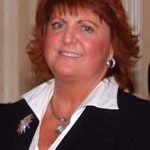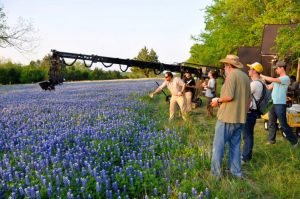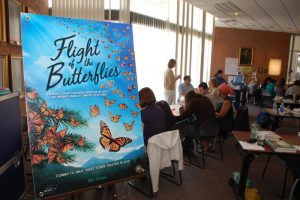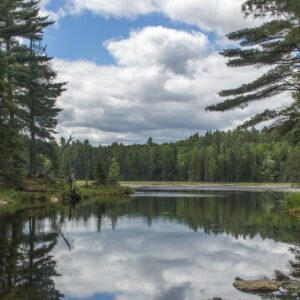Get To Know Our Women For Nature Members
 Interview of new Woman for Nature Wendy MacKeigan, by Woman for Nature Sharolyn Mathieu Vettese.
Interview of new Woman for Nature Wendy MacKeigan, by Woman for Nature Sharolyn Mathieu Vettese.
Sharolyn: Wendy, welcome to Women for Nature! You are the Executive Vice-President of SK Films that has won major awards in Canada, and internationally for its nature films, and shows. You co-wrote Flight of the Butterflies, the IMAX 3D hit starring Gordon Pinsent as the Canadian scientist, Fred Urquhart who solved the mystery of the Monarch butterflies’ amazing migration from Canada to the remote mountain forests in Mexico. Let’s start with the Monarchs since I care deeply about them, and have been twice to see them in Mexico’s UNESCO Biosphere Monarca.
What prompted you to do this film?
Wendy: It’s a great scientific detective story, a heartwarming Canadian story of perseverance and ultimate triumph by a husband and wife team combined with beautiful scenery and stunning animal behaviour – who wouldn’t want to see hundreds of millions of monarch butterflies floating around in the high pine-covered mountain tops of Mexico?. It was a very moving story to research and write, and my partner and I felt it would make a very compelling film – especially for IMAX 3D, that we filmed in Toronto, the US and Mexico, along the migratory route of the monarchs over a year. SK Films had previously made a successful film called Bugs! 3D A Rainforest Adventure that was filmed in the Borneo rainforest, so we knew we could capture the same close-ups of these small creatures that had delighted audiences, especially youth and families.
We made “Flight …” in the hope of engaging kids more with science and the scientific discovery process. We also knew that kids relate to and understand the science much more when youth can relate to the scientists, when you humanize the scientist and his/her goals, obstacles, sacrifices, failures and successes. Kids are especially engaged when scientists won’t give up. They find it inspirational. They see that when something means something to you, you should persevere through the hardship to achieve your dream. This seems to be a universal message.
Telling stories is a powerful way we can connect people – and especially youth – not just to science, but also to nature in general, to understand how everything is interconnected. And it was ordinary citizens who made such a huge difference in unraveling the mystery of the monarch butterfly migration – citizen scientists from Canada and the US.
S: Like you and me?
Yes. It was Fred’s wife, Norah, who really started the idea of involving regular people to help them, which led to setting up a tagging program across North America, which lasts to this day. Fred and Norah used people’s tagging information to follow the monarch’s migration from Toronto to Texas where they reached a dead-end. It was Nora who suggested they put an ad in the Mexican newspaper asking if the Monarchs were sighted there, and surprisingly, they got a response from a couple living in Mexico, an American Ken Brugger and his Mexican wife Catalina Aguado. With their important help – and again they were not scientists, but ordinary people with an interest in nature – Fred and Norah continued on the trail that eventually led to the mountain forests where the Monarchs roost in the winter. Fred and Norah were real partners, dividing the considerable work between them. Her strength was in communication, which was key to solving the Monarch mystery. When Fred was awarded the Order of Canada, he politely declined unless Norah was included – which she was. Considering I work with my husband in our company, I found it very interesting and got to know a lot of people who knew them well in the 60’s and 70’s and would often ask them what Fred and Norah were like as a couple working so closely together, including asking the only surviving member of the discovery team, Catalina, and she was very inspired by how well they worked together and how respectful Fred was of Norah and her many contributions and those that Catalina made in solving the overwintering mystery. Fred was experiencing serious health issues at the time of the discovery, but went to Mexico despite his doctor’s orders.

Crew in action filming monarchs in a field of Bluebonnets in Texas. Photo from Flight of the Butterflies
S: Was the Mexican government supportive of the film?
W: Yes, very much. They invested in the film and see the importance of maintaining the health of the migration, which is threatened, and the economic value of eco-tourism, with their amazing butterfly mountain sanctuaries and overwintering sites. We were very fortunate that the President of Mexico at the time the film was made and first exhibited, Felipe Calderon, was from the state where the butterflies overwinter and he is an environmentalist/conservationist and was very much behind the film and hosted its World Premiere at the Smithsonian in Washington. Also the current President Peña Nieto is from the bordering state with some sanctuaries and he too is committed to the monarchs’ conservation, as he was when he was the State’s Governor.
The reaction to the film around the world has been amazing.
S: When I was in Mexico, I was appalled that close to 90% of the 56,000 hectares of the biosphere has been logged by squatter farmers who are cutting the trees for housing and fuel, and growing crops on the cleared land. It seems we can plant all the milkweed here, but if their overwinter habitat isn’t preserved, it isn’t enough.
W: We obviously need both. But the fact is, the loss of overwintering habitat is much more under control than it used to be, although there is much more that needs to be done, but the more serious problem is outside of Mexico on the migratory routes where the monarchs main food source, the milkweed plant is being destroyed. The monarchs can fly a mile high but they come down each night on their migration to rest and find food and even lay their eggs. When small farms are turned into industrial farms, the milkweed borders around those farms are eliminated. Also, the new pesticide resistant seeds can take more pesticide spraying but the milkweed, eggs and monarchs cannot, and this all adds to the serious decline in milkweed plants and monarch numbers. Within the monarch biosphere, the biggest threat to the Monarchs are the freak storms that occur more frequently in Mexico that scientists state are caused by climate change that kill millions of Monarchs at a time by bringing the deadly combination of wet and cold – it is devastating to see. This has caused great concern with our 3 world leading monarch butterfly experts who were advisors on the film and are all involved in conservation movements for the monarchs, Monarch Watch, Monarchs in the Classroom and Journey North.
S: Did the Monarch Biosphere benefit from “Flight”?
W: Yes, in several ways. We have drawn attention to this amazing creature and its habitats and main food source and helped underscore the importance of the biosphere and the migratory routes, plus we are donating a portion of the revenue from the film to one of the organizations dedicated to protecting it – Fondo Mexicano para la conservacion de la naturaleza. We also produced milkweed seed packages. There are over 100 different varieties of milkweed in North America and we had different packages made for specific areas that the monarchs favour so that students, teachers and moviegoers could plant the right milkweed for their region. We distributed over half a million milkweed seeds.
S: What are you working on now?
W: Well we are continuing our award-winning TV series called The Water Brothers broadcast on TVO starting on March 3rd for its fourth season and shown in over 40 countries. It’s an eco-adventure series with two brothers exploring the globe, examining the most important water stories of our time in both fresh water and in the oceans. Water connects us all and – just like the native women who have the important role in their culture as the water keepers – we all have to be water keepers and make our contribution to protecting and sustaining our most precious resource, which is constantly under threat. We are very proud of this series. In terms of another IMAX/Giant Screen film, our current one is Amazon Adventure 3D, another scientific detective story of a great discovery by an intrepid scientist named Henry Walter Bates. He had a passion for nature, was largely self-taught and almost unknown, but who against all odds provided what Darwin called “the beautiful proof” for what is the greatest explanation ever of the development of life on earth – Natural Selection. Bates, starting at the age of 23, spent 11 years in the Amazon from 1848 to 1859, played the guitar, spoke many native languages, risked his life, and made astounding discoveries about mimicry, discovered over 8,000 species new to science and put forward the first case ever for speciation – the creation of a new species through adaptation and natural selection. His collections are in the Natural History Museum in London and some in Paris are still valued scientifically today. The London museum kindly loaned us Bates’ 150 year old butterflies for the film. Batesian mimicry is still taught in biology classrooms. We have some examples of mimicry that will blow your minds – a pretty flower bud that is really a predatory spider, bird droppings that are really a bug, and a 4 inch moth caterpillar that looks exactly like the head of a viper snake, a non-toxic butterfly that looks identical to a toxic one – these are amazing examples of nature in action in the game of survival.
We have done test screenings of the rough cut of the film and are very happy that youth are responding so favourably to it – they find Bates very inspirational because he would not give up no matter the obstacles, malaria and yellow fever, starvation, violent storms, impenetrable jungles, jaguars and so on. They also seem to understand the complicated notion of natural selection by watching the film, which is really important to us and our team of investors, all committed to science education.
S: What was it like working in the Amazon?
W: Filming in the Amazon is very challenging, but with modern technology and resources, it pales in comparison to what Bates went through over 150 years ago, traveling and working in this environment. Apart from the intense heat and humidity and the logistical difficulties moving a crew of 125 up and down the river and through the rainforest to our incredible locations, and filming for the challenging medium of IMAX 3D, our biggest problems were some of crew getting sick with the Zika virus (fortunately, they recovered quickly and are fine) and a pet monkey that was always way too “happy”. Bates had several pet monkeys, and the one we used basically had a constant erection that we had to work and shoot around, since we make our films for the family IMAX museum market. It is always challenging to get the behaviour of the creatures in nature and for our natural history filming unit, we had the very talented Director of Photography Richard Kirby who works with BBC Earth a lot and has incredible patience. It turns out, our pet animal caused us even more challenges as he was being filmed with humans. Our very skilled and experienced director Mike Slee would arrive on set and ask, “just how happy is our lovely monkey today?”
S: What is next for you?

Flight of the Butterflies at a monarch educational seminar. Photo from Flight of the Butterflies.
W: We are releasing the film in April, as we are also distributors, with a World Premiere at the Smithsonian’s Natural History Museum, so we will be working hard to get the message out to the world about the extraordinary bio diverse Amazon ecosystem and its importance to, amongst other things, our understanding of the development of life on the planet, particularly for kids to understand the science-based evidence for natural selection.
S: How has nature affected your life?
W: I was fortunate that I grew up in Sudbury, and in small town around it as my father was a mining engineer with INCO, where we had a cottage. I went to the YMCA Girl Guide summer camps, and nature was all around. It is incredible to be immersed in nature, observing and inhabiting it and trying to make sense of all of its mysteries. There is so much to see. I’d roam around and watch for hours, and didn’t even notice the time going by until I was called for dinner. My love of the natural world was the reason that I chose to study environmental studies at university. More recently, I discovered scuba diving, which we do as a family, and have added the underwater world to the places in nature I love to observe. My early life gave me a fundamental connection to nature that I have never lost and have tried to pass on to my children and it is central to the work I do in film and television, hopefully in some small way combatting the widespread condition that Margaret Atwood calls NDD – Nature Deficit Disorder. It is a family affair, since my two sons are the creative and scientific force behind “The Water Brothers”. They have worked with many of the top water scientists in the world and are also water ambassadors for WWF, working with David Miller, and are passionate about communicating the message in Canada and around the world, that everything is interconnected especially with water..
S: How do you incorporate nature in your daily life?
W. By limiting my own, my family’s, and my company’s carbon footprint. My eldest son is a “green” contractor always giving us tips on how to be more energy efficient and aware at home as my other sons give tips on water sustainability and all the little things I can do. We have a cottage in Georgian Bay that is off-grid and solar powered. We’re very much aware of this mindset. Once you get it, you see how you can reduce it. We can all be innovative to reduce our footprint if we put our minds to it, as The Water Brothers and other conservationists are eager to share with us. It is not a big effort if it is a family thing, which it is for us.
S: What does it mean to you to be a Woman for Nature?
W: It was an honour to be asked to be a Woman of Nature and it really is an impressive group of dedicated and passionate women. I am pleased that Nature Canada values the important role that media can play in communicating the message of environmental sustainability and raising awareness and action to manage our natural resources wisely and particularly to start that process of nature education early in a child’s life. In these times, it is very important for scientists and naturalists to communicate better. Just because something is science-based and provides evidence, does not necessarily mean that the average person will understand it, and without understanding there cannot be raised awareness and appropriate changes in behaviour. It is our job to make sure the simple and clear information including impacts and solutions in everyday life is effectively communicated whether it is climate change or how species adapt, are threatened or go extinct or the impact of water pollution or whatever the case might be. To be selected as part of Canada’s 150th birthday is important so that more people know about nature and I am proud that so many Canadians value our precious natural bounties and are willing to make sacrifices for sustainability It is like belonging to a tribe with a clear mission. We have to lay the groundwork for the next 25 years. We need to inspire future generations about the importance of nature, and our role in it.
S: Thank you, Wendy.
W: It was a pleasure, Sharolyn
Interested in seeing this film? Here is where it is playing now in Canada:
[custom_table style=”1″]
| Telus World of Science Edmonton Edmonton, AB (School Groups) www.telusworldofscienceedmonton.com |
Telus Spark Calgary, AB (School Groups) www.sparkscience.ca |
| Cineplex Toronto, ON (School Groups) www.cineplex.com |
Canadian Museum of History Gatineau, Quebec (School Groups) www.historymuseum.ca |
| Telus World of Science – Vancouver Vancouver, BC (School Groups) www.scienceworld.ca/omnimax |
IMAX Victoria Victoria, BC (School Groups) www.imaxvictoria.com |
[/custom_table]
Wendy MacKeigan
Executive Vice President, SK Films Inc.
Wendy is one of Canada’s most experienced and respected film executives with both a strong creative and business background. She is a principal of SK and oversees creative development for the company. She is leading the writing team for SK’s next major IMAX®/Giant Screen production, Amazon Adventure in partnership with Tangled Bank Studios, a division of the Howard Hughes Medical Institute. She co-wrote the worldwide audience and critical hit Flight of the Butterflies 3D, was Senior Story Editor on the award-winning IMAX®/Giant Screen film, Journey to Mecca: In the footsteps of Ibn Battuta and is the Producer of the award-winning eco-adventure series, The Water Brothers, broadcast in over 45 countries.



